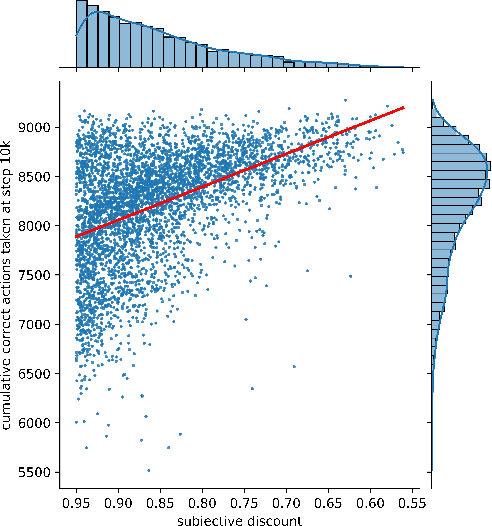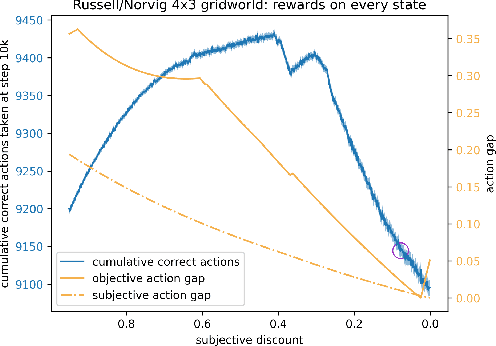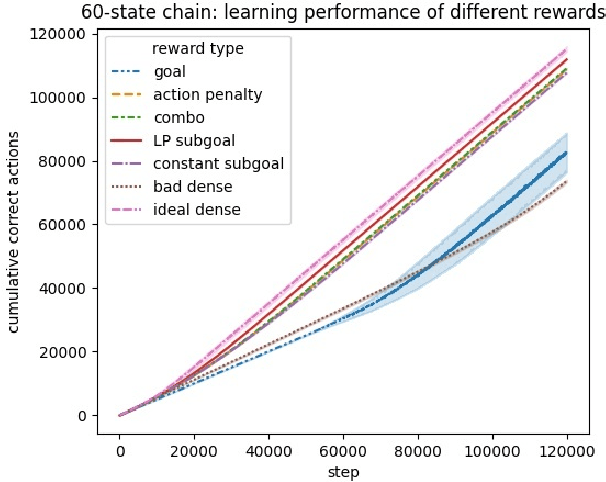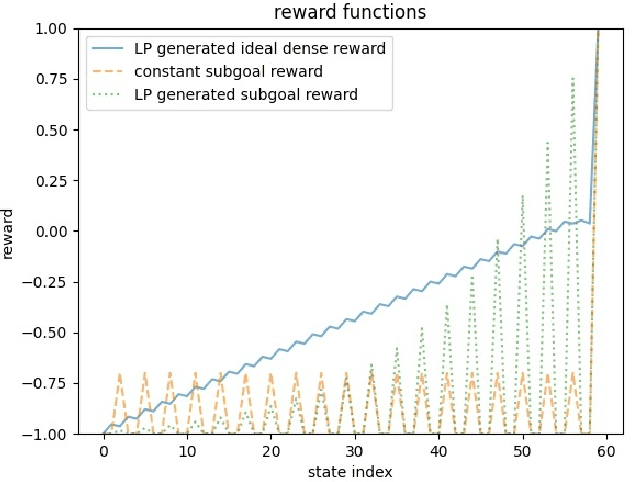Henry Sowerby
Specifying Behavior Preference with Tiered Reward Functions
Dec 07, 2022Abstract:Reinforcement-learning agents seek to maximize a reward signal through environmental interactions. As humans, our contribution to the learning process is through designing the reward function. Like programmers, we have a behavior in mind and have to translate it into a formal specification, namely rewards. In this work, we consider the reward-design problem in tasks formulated as reaching desirable states and avoiding undesirable states. To start, we propose a strict partial ordering of the policy space. We prefer policies that reach the good states faster and with higher probability while avoiding the bad states longer. Next, we propose an environment-independent tiered reward structure and show it is guaranteed to induce policies that are Pareto-optimal according to our preference relation. Finally, we empirically evaluate tiered reward functions on several environments and show they induce desired behavior and lead to fast learning.
Designing Rewards for Fast Learning
May 30, 2022



Abstract:To convey desired behavior to a Reinforcement Learning (RL) agent, a designer must choose a reward function for the environment, arguably the most important knob designers have in interacting with RL agents. Although many reward functions induce the same optimal behavior (Ng et al., 1999), in practice, some of them result in faster learning than others. In this paper, we look at how reward-design choices impact learning speed and seek to identify principles of good reward design that quickly induce target behavior. This reward-identification problem is framed as an optimization problem: Firstly, we advocate choosing state-based rewards that maximize the action gap, making optimal actions easy to distinguish from suboptimal ones. Secondly, we propose minimizing a measure of the horizon, something we call the "subjective discount", over which rewards need to be optimized to encourage agents to make optimal decisions with less lookahead. To solve this optimization problem, we propose a linear-programming based algorithm that efficiently finds a reward function that maximizes action gap and minimizes subjective discount. We test the rewards generated with the algorithm in tabular environments with Q-Learning, and empirically show they lead to faster learning. Although we only focus on Q-Learning because it is perhaps the simplest and most well understood RL algorithm, preliminary results with R-max (Brafman and Tennenholtz, 2000) suggest our results are much more general. Our experiments support three principles of reward design: 1) consistent with existing results, penalizing each step taken induces faster learning than rewarding the goal. 2) When rewarding subgoals along the target trajectory, rewards should gradually increase as the goal gets closer. 3) Dense reward that's nonzero on every state is only good if designed carefully.
 Add to Chrome
Add to Chrome Add to Firefox
Add to Firefox Add to Edge
Add to Edge